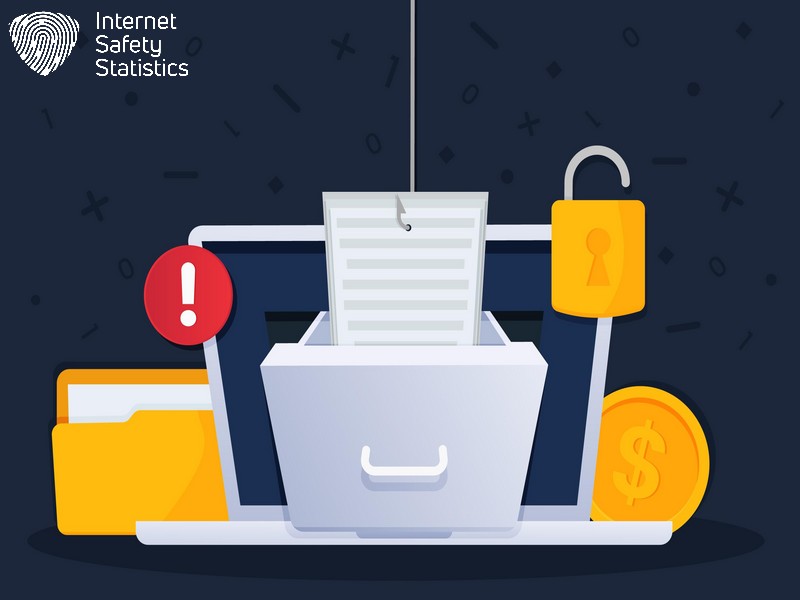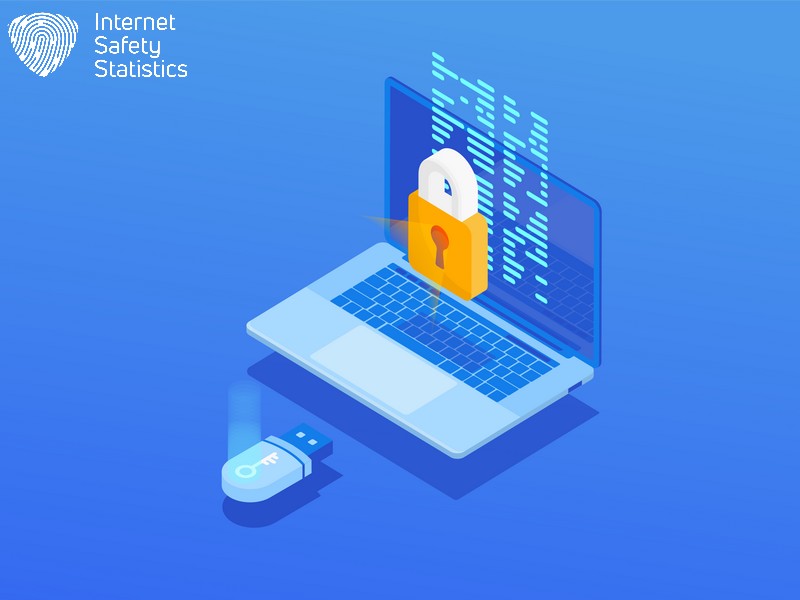
The digital age offers undeniable convenience and exposes our personal information to potential security breaches. Hackers and cybercriminals constantly seek unauthorized access to sensitive data. Fortunately, data encryption stands as a powerful defence mechanism in this ever-evolving landscape.
Encryption scrambles your data using complex algorithms, transforming it into an unreadable format. This process renders it useless to anyone who doesn’t possess the decryption key, essentially acting like a digital vault secured with a combination lock. Even if your data is intercepted, it remains unintelligible without the key.
This guide empowers you to take control of your digital security. We’ll explore various methods for encrypting your personal data, from securing individual files and folders to safeguarding entire devices. With clear, step-by-step instructions, you’ll easily learn how to implement these measures. Encrypting your data can significantly reduce the risk of identity theft, data breaches, and unauthorized access, ensuring your digital life remains secure.
Understanding Data Encryption
Data encryption is converting data into a code to prevent unauthorised access. It provides benefits such as confidentiality, integrity, and authentication. Common methods include symmetric and asymmetric encryption algorithms.
What is Data Encryption?
Data encryption translates your important files, messages, and information into a secret code before they travel across the internet or sit on your computer. Think of it as writing a message in a mysterious language that only someone with a special key can understand. This way, even if someone gets their hands on your data, all they see is gibberish unless they have the correct password to decode it.
Using advanced mathematics and algorithms, encryption scrambles this sensitive data so well that it’s nearly impossible for hackers to break the code without the unique key. It shields personal details like credit card numbers and passwords from cyber thieves who might want to steal them.
Whether sending an email or saving financial documents on your laptop, encrypting this information ensures that prying eyes can’t make sense of it – safeguarding you from potential breaches and keeping private details private.
Benefits of Data Encryption
Data encryption protects sensitive information from unauthorised access and cyber threats. Encrypting personal data provides an extra layer of security against potential data breaches and identity theft risks. It ensures that financial information, personal details, and confidential documents remain secure. Here are the key benefits of data encryption:
- Safeguards sensitive information such as credit card numbers, passwords, and personal details from unauthorised access and misuse.
- Helps to comply with regulatory requirements related to data protection and privacy measures.
- Knowing that your personal and financial information is shielded from cyber-attacks and unauthorised access provides peace of mind.
- Mitigates the risk of data breaches, which can lead to financial loss, reputational damage, and legal ramifications.
- Ensures confidentiality for government-classified documents, thereby safeguarding national security interests.
- Protects sensitive information when stored in cloud services or transmitted over networks.
Common Methods of Data Encryption
Data encryption includes numerous types and methods. The most commonly used encryption methods include AES and DES encryption methods. However, other popular encryption methods, such as RSA and Blowfish Algorithm, apply to specific instances.
- Advanced Encryption Standard (AES): Utilised widely for its efficacy in protecting classified and financial information, AES employs symmetric key encryption, making it suitable for software and hardware.
- Triple Data Encryption Standard (3DES): Based on the original DES algorithm, 3DES enhances security by applying the algorithm thrice, offering robust protection against unauthorised access.
- Rivest-Shamir-Adleman (RSA) Encryption: The asymmetric encryption method relies on public and private keys, with the public key used for encryption and the private key for decryption, ensuring secure data transmission.
- Elliptic Curve Cryptography (ECC): Suitable for resource-constrained environments due to its ability to offer high security with shorter key lengths, ECC is a popular choice for securing mobile devices and smart cards.
- Blowfish Algorithm: This symmetric-key block cypher is known for its efficiency in encrypting bulk data and is frequently employed in software programmes due to its speed and adaptability.
- Twofish: Building upon the success of Blowfish, Twofish provides a powerful encryption solution with an adaptable key length that supports various platforms. It is often employed in file-based encryption applications.
Types of Data Encryption
Understanding the difference between symmetric and asymmetric encryption is crucial in protecting personal data. Various encryption algorithms and standards, such as AES, play a significant role in securing sensitive information.
Symmetric vs. Asymmetric Encryption
Data encryption is pivotal in safeguarding our personal and sensitive information. It comes in two fundamental types: symmetric and asymmetric encryption. Here’s a comparison to help you understand their differences.
| Symmetric Encryption | Asymmetric Encryption |
|---|---|
| Uses a single key for both encryption and decryption. | Employs two separate keys — a public key for encryption and a private key for decryption. |
| Generally faster due to simpler key management. | It is more suited for secure key exchange and digital signatures. |
| It can be vulnerable if the key is discovered. | It can be vulnerable if the key is discovered. |
| Examples include AES and DES algorithms. | RSA and ECC are common asymmetric algorithms. |
| Can be vulnerable if the key is discovered. | Remains secure even if the public key is exposed, as long as the private key is safe. |
| Typically used for encrypting data at rest. | Often used for encrypting data in transit. |
Selecting the appropriate encryption type depends on your specific needs and context. Remember, keeping your encryption keys secure is as crucial as encryption.
Examples of Symmetric and Asymmetric Encryption Algorithms
Symmetric encryption algorithms use the same key for both encryption and decryption. This method includes widely used algorithms such as AES (Advanced Encryption Standard), favoured for speed and efficiency.
Common Data Encryption Standards
After understanding the examples of symmetric and asymmetric encryption algorithms, it’s important to explore the common data encryption standards. The following are some widely recognised data encryption standards used to secure personal information and sensitive data:
- Advanced Encryption Standard (AES): This widely adopted standard encrypts classified government documents, financial information, and personal data. It provides a high level of security and is considered unbreakable by brute-force attacks.
- Triple Data Encryption Standard (3DES): 3DES is a symmetric key encryption algorithm that applies the DES algorithm three times to each data block. Although less secure than AES, it remains in use for legacy systems.
- Rivest Cipher (RC) Series: Developed by renowned cryptographer Ronald Rivest, the RC series includes several algorithms, such as RC2, RC4, and RC6. Each algorithm offers varying levels of security for different purposes.
- Blowfish: This symmetric-key block cypher is known for its fast encryption speed and strong security features. It’s commonly used in network protocols and applications where efficiency is crucial.
- Elliptic Curve Cryptography (ECC): ECC is an asymmetric encryption technique that leverages the algebraic structure of elliptic curves over finite fields to provide secure communication channels with reduced computational requirements.
- Pretty Good Privacy (PGP): PGP is a data encryption programme that provides cryptographic privacy and authentication for data communication through public key cryptography.
- Transport Layer Security (TLS) & Secure Sockets Layer (SSL): These cryptographic protocols are widely used to secure internet communications between servers and web browsers, ensuring privacy and data integrity.
- International Data Encryption Algorithm (IDEA): Widely regarded for its strong security features, IDEA is a symmetric key block cypher utilised in various applications requiring secure communication channels.
Encryption for Data in Transit vs. Data at Rest

It is essential to understand the importance of encrypting data in transit and at rest and the different methods for securing each. Keep reading this ultimate guide to learn more about protecting your data using encryption.
Importance of Encrypting Data in Transit and at Rest
Encrypting data in transit and at rest is crucial for safeguarding sensitive information from unauthorised access. Data encryption ensures that any data transferred between devices or stored on servers remains secure and inaccessible to cybercriminals. Encryption methods such as AES, financial information, personal details, and government-classified documents can be effectively protected from potential security breaches.
Data encryption also serves as a vital security measure for businesses and individuals seeking to maintain the confidentiality of their information. Implementing encryption for data in transit prevents interception during transmission while encrypting data at rest safeguards it from unauthorised access if the storage medium is compromised.
Methods for Encrypting Data in Transit
Encrypting data in transit is crucial for safeguarding information as it moves between devices and networks. By employing robust encryption methods, you can ensure your data remains secure from unauthorised access. Here are some effective methods for encrypting data in transit:
- Transport Layer Security (TLS): TLS is widely used to provide secure communication over a computer network. It encrypts data during transmission, preventing eavesdropping and tampering.
- Virtual Private Network (VPN): Utilising a VPN creates an encrypted tunnel for transmitting data over public networks, ensuring privacy and security.
- Secure Sockets Layer (SSL): SSL is a standard security technology that establishes an encrypted link between a web server and a browser, safeguarding sensitive information during online transactions.
- IPsec (Internet Protocol Security): IPsec protocol authenticates and encrypts each IP packet within a communication session, securing data as it travels across the internet.
- End-to-End Encryption: This method ensures that data is encrypted from the sender’s device to the recipient’s without intermediaries having access to the unencrypted content.
- Secure File Transfer Protocols: Use secure file transfer protocols such as SFTP (Secure File Transfer Protocol) or FTPS (File Transfer Protocol Secure) to transfer files over a network securely.
- Data Masking: Data masking involves replacing sensitive data with fictitious but realistic data so that the original data cannot be deciphered during transmission.
Methods for Encrypting Data at Rest
Encrypting data at rest is crucial for ensuring the security of your personal information. Here are some methods to encrypt data at rest:
- Encryption software: Encryption software secures stored data through algorithms that render it unreadable without the appropriate decryption key.
- Full-disk encryption: Apply full-disk encryption to safeguard all data on a computer or device, preventing unauthorised access in case of loss or theft.
- File-level encryption: Implement file-level encryption to protect specific files and folders individually, enabling granular control over sensitive information.
- Hardware-based encryption: Employ hardware-based solutions such as encrypted USB drives or self-encrypting hard drives for enhanced protection of stored data.
- Key management: Establish robust key management practices to regulate access to encrypted data and safeguard encryption keys from unauthorised use or compromise.
- Regular updates: Ensure regular updates and maintenance of encryption tools and technologies to address vulnerabilities and maintain effective protection against evolving threats.
The Possibility of Hacking Encrypted Data
After taking the necessary precautions to encrypt data at rest, it’s important to acknowledge the possibility of hacking encrypted data. While encryption is a powerful tool for securing sensitive information, it is not immune to potential threats.
Cybercriminals are constantly developing new methods to bypass encryption and gain unauthorised access to protected data. Despite rigorous encryption measures, there remains a risk of sophisticated hacking techniques compromising encrypted information. To safeguard against the possibility of hacking encrypted data, it’s essential to stay informed about emerging cybersecurity threats and continuously update encryption protocols.
Trends in Data Encryption
Different encryption solutions, such as BYOE and EaaS, are emerging in the industry, emphasising the importance of encryption in cloud storage. The role of encryption in data security continues to evolve with advancements in technology.
Different Encryption Solutions, such as BYOE and EaaS
- BYOE enables individuals and organisations to manage their encryption keys, giving them complete control over their data security.
- EaaS provides a cloud-based encryption service, allowing users to encrypt data without requiring extensive in-house infrastructure.
- BYOE and EaaS ensure that sensitive information remains secure at rest or in transit.
- Using BYOE or EaaS can help safeguard financial information, personal details, and government-classified documents from unauthorised access.
- Employing these encryption solutions is essential for maintaining document security and privacy protection in today’s digital landscape.
Importance of Encryption in Cloud Storage
Encryption in cloud storage is vital for securing sensitive information such as financial data, personal details, and government-classified documents. Strong encryption methods like AES can shield data from unauthorised access and cyber threats. Encryption plays a crucial role in maintaining the confidentiality and integrity of stored information, providing an additional layer of protection against potential data breaches.
Implementing encryption in cloud storage safeguards against unauthorised access to confidential information, offering peace of mind to individuals and businesses alike. Securely storing data through encryption ensures that personal and financial details remain protected, contributing to overall cyber resilience and security.
The Role of Encryption in Data Security
Data encryption is critical in safeguarding sensitive information, such as financial details and personal data, from unauthorised access. By translating data into unreadable code using complex algorithms, encryption ensures that only those with the correct key or password can decipher the information. This security measure is crucial for protecting government-classified documents and confidential business data, providing a vital layer of defence against cyber threats and unauthorised breaches.
Employing robust encryption methods is imperative for ensuring secure storage of important data. It also contributes significantly to maintaining network security and preventing data loss.
Best Practises for Encrypting Personal Data

Implementing encryption tools and technologies, ensuring regulatory compliance, providing employee training and awareness, and developing effective data retention policies are key best practices for encrypting personal data. Remember to protect your data with encryption to protect it from cyber threats.
Using Encryption Tools and Technologies
To protect your personal data, you can employ encryption tools and technologies. Follow these best practices to keep your information safe and secure:
- Utilise AES encryption, a widely used method that translates data into code that is accessible only with the correct key or password.
- Leverage data encryption software to safeguard financial information, personal details, and government-classified documents.
- Implement data loss prevention solutions to prevent unauthorised access to confidential information.
- Employ secure storage techniques to protect sensitive data, such as credit card numbers and passwords.
- Regularly update your encryption methods and software to avoid cyber threats and maintain high-level information security.
- Train employees on the importance of using encryption tools and technologies for regulatory compliance and personal security.
Importance of Encryption for Regulatory Compliance
Encryption plays a crucial role in meeting regulatory compliance requirements. It ensures that sensitive data is protected and meets the standards set by regulations such as GDPR, HIPAA, or PCI DSS.
Encryption helps businesses and individuals safeguard financial information, personal details, and other confidential data from unauthorised access or potential breaches. Organisations can avoid costly fines and maintain customer trust by encrypting data according to regulatory guidelines.
Ensuring regulatory compliance through encryption involves using strong encryption methods like AES to secure classified documents and personal information. This approach protects sensitive data and demonstrates a commitment to upholding legal requirements for data protection.
Importance of Employee Training and Awareness
Employee training and awareness play a vital role in ensuring data security. Properly trained employees are more likely to recognise potential security threats and handle sensitive information carefully. Training programmes can educate staff about best practices for data encryption, such as using strong passwords and identifying phishing attempts.
Awareness also fosters a culture of vigilance within an organisation, where employees understand the importance of encrypting personal data for security. This level of understanding significantly reduces the risk of human error, leading to data breaches or unauthorised access to confidential information.
Tips for Developing Effective Data Retention Policies

To develop effective data retention policies, consider the following tips:
- Create a clear data classification system to identify and categorise different data types based on sensitivity and regulatory requirements. This will help establish appropriate retention periods for each category.
- Regularly review and update data retention policies to ensure compliance with changing regulations and industry standards and align with the organisation’s evolving needs.
- Implement technology solutions that can automate the process of identifying, classifying, and managing data retention according to established policies.
- Educate employees about the importance of adhering to data retention policies and provide training on proper data handling practices to minimise security risks.
- Establish protocols for securely disposing of outdated or unnecessary data under legal requirements and best practices for data protection.
In conclusion, encrypting personal data is crucial for protecting sensitive information from unauthorised access. Encryption methods such as AES can help secure financial, personal, and government-classified documents. Understanding data encryption’s benefits and best practices is essential for safeguarding confidential information. By implementing proper encryption techniques, individuals and businesses can enhance their cybersecurity measures to keep their data safe and secure from threats.
FAQs
1. What is data encryption, and why is it important?
Data encryption converts your personal information into a secure format that can’t be read without a key, protecting it from cyber threats and securing financial and confidential information.
2. How does AES encryption safeguard my data?
AES encryption is a powerful method that scrambles your data, making it inaccessible to unauthorised users, and ensuring the protection of personal and government-classified documents.
3. Can I encrypt my data for secure storage?
Yes, you can employ various data encryption methods to protect your personal information and securely store it on digital devices or cloud services.
4. Are there special techniques for encrypting sensitive financial information?
Absolutely! Using specific data protection techniques tailored for financial information ensures an extra layer of security against potential cyber breaches or unauthorised access.
